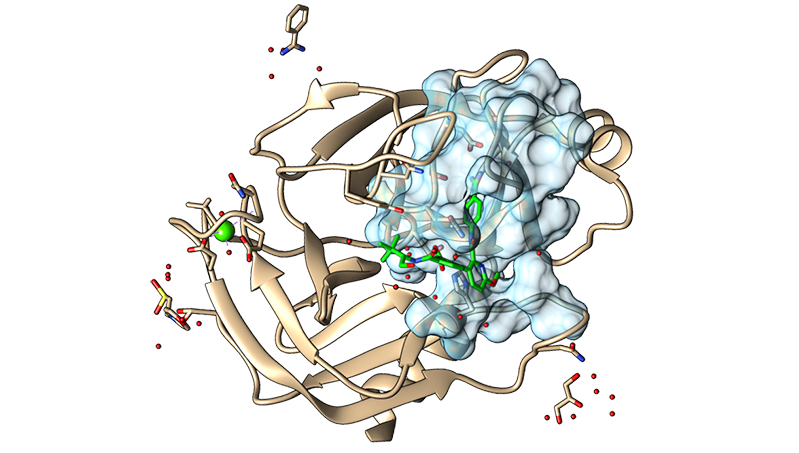(Via Universitat de Barcelona)
The research group leaded by Xavier Barril, user of the Spanish Supercomputing Network, has developed a more efficient computational method to identify new drugs. The study, published in the scientific journal Nature Chemistry , proposes a new way of facing the discovery of molecules with biological activity. Since it is based on a different approach, this method complements conventional tools and allows going forward in the path of rational drug design. Xavier Barril is an ICREA researcher from the University of Barcelona. This research project had also the participation of Professor Francesc Xavier Luque and PhD student Sergio Ruiz Carmona.
In pharmaceutical research, the improvement on efficiency and effectiveness in the discovery of drugs is a key goal. In this process, researchers aim to identify the molecules that can bind to a target protein and modify its behavior according to clinical needs (bioactive molecules). “All current methods to predict if a molecule will bind the wished protein are based on thermodynamic stability. However, we have shown that bioactive molecules have to create complexes with the target protein which are structurally stable, and that it is possible to distinguish between active and inactive calculating the energy necessary to break some specific interactions”, says Professor Xavier Barril.
This new approach that evaluates structural stability has been applied in software that identifies molecules with more possibilities to bind the targeted protein. The novel computational method, called Dynamic Undocking (DUck), allows automatic and high throughput calculation of the thermodynamics and kinetics for the process of formation of non-covalent complexes between the molecule and the protein.
“The method allows selecting molecules that can be the starting point to create new drugs”, says Barril. “Moreover, -he continues- the process is complementary with existing methods and allows multiplying five times the efficiency of the current processes with lower computational costs. We are actually using it successfully in several projects in the field of cancer and infectious diseases, among others”.
To perform this research, the team of Xavier Barril used more than 500.000 hours of computation in the RES node MinoTauro, in the Barcelona Supercomputing Center.
Article reference: Ruiz-Carmona, Sergio, et al. "Dynamic undocking and the quasi-bound state as tools for drug discovery" Nature Chemistry (2016).
Picture from http://www.ub.edu/bl/undocking/
